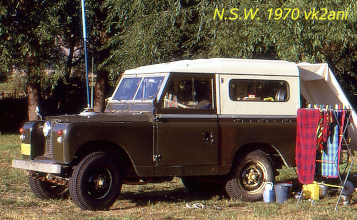1970ies ICs and Transistors in Plastic Packages
Moisture-induced Failures
When I was heading a radio system design lab for a large industrial company in the 1970ies our quality control people still did not allow us to use transistors in plastic packages due to
continuing reliability problems. The main problem was, that apparently cracks developed where the wires entered the case and humidity crept inside causing failures of the transistor.
This problem was eventually solved using different compounds and manufacturing processes. The problem was shared by plastic encapsulated ICs which also failed due to this mechanism. See the
Application Note by National listed at left.
Therefore in our electronics small metal transistors, ceramic RF-power transistors, metal can op amps or frit-seal ceramic logic ICs where required and exceptions granted only when parts
like UHF small signal transistors or dedicated function ICs were not available or when, then only as fully qualified MIL Spec components.
Long Term Failures
Our radios and computers using such plastic packages can develop degradation or outright failures of components due to the humidity entering through the cracks and damaging the die or the bond wires. As they are now well over 40 years old, such failures are not infrequent and happen even in professional equipment where components were carefully selected. I had e.g. several bus driving transistors fail in a DEC PDP8I system or 84 series TTL logic an a synthesizer by Rohde & Schwarz in several E-401 receivers. The aging process of these plastic parts was then just not completely understood. Failures are one thing, but degradation such as loss of gain of op amps or marginal function of logic circuits is sometimes difficult to find and remains a real challenge.
Removing ICs etc from PCBs
On single side printed circuit boards it is possible to remove components or an IC by removing the solder (best with a vacuum pump iron) and lifting the component carefully out. Always use a temperature controlled iron only! Multipin components on double-sided boards should never be removed this way. The process risks to damage the plated-through holes and ruin the board. It is much better to cut off the component first and then remove the wires/pins individually. IC legs can be cut using a narrow sharp cutter. Again all holes need to be sucked out and the board cleaned before reinstalling components. However do not install new ICs directly whenever possible, use a socket instead (makes trouble-shooting easier too). The sockets should be the machined type only as this also allows repair-soldering on top of the PCB should the through hole be damaged. They cost a bit more but are really worth it!
Selecting Replacement Parts
Many NOS parts can be found e.g. on Ebay but beware of the many fakes (mostly from China) and buy from reputable sources. Also be wary of NOS parts in plastic packages with date codes from the 70ies or so - they just might suffer from the same problem.
In the case of most small signal transistors replacement is not critical and more recent parts/types can be used. Study the datasheet for things like gain, max voltages, max frequency, power dissipation, pin layout to check for approximative compatibility. With power transistors it gets a bit more difficult as e.g. newer parts have higher frequency limits and the old circuit might now oscillate! In the case of RF power transistors or many UHF small signal types mostly only the exact type will do due to the matching circuits present. Nothing is impossible however.
Replacing TTL ICs is easy as long as the part is still existing (as many of them do as LS, HC and HCT). To avoid complications (like unconnected inputs) it is best to look for a 74LS part which so far has always worked for me. Should you decide to use CMOS, it should be 74HCT in a TTL environment but it's less 1:1 than 74LS. Of course if you find a NOS frit-seal TTL or LS part that will do as well! Early CMOS (4000 series) can often be found as 74HC4xxx and will work perfectly. Once in a while the old logic circuit might malfunction due to the higher speed of the new parts. So far I was spared this effect!
Many op amps can be found as DIL components although sometimes changes to the pin-out from e.g. DIL14 to DIL8 might be be necessary. Some old types exist as NOS frit-seal DIL units which are fine too. Round metal can parts are more difficult to find as they were produced in much smaller numbers. To select a different type for the application might prove more difficult in the analog world, try to find the exact number or perhaps a later variant will do, keep your probes ready in such cases!
